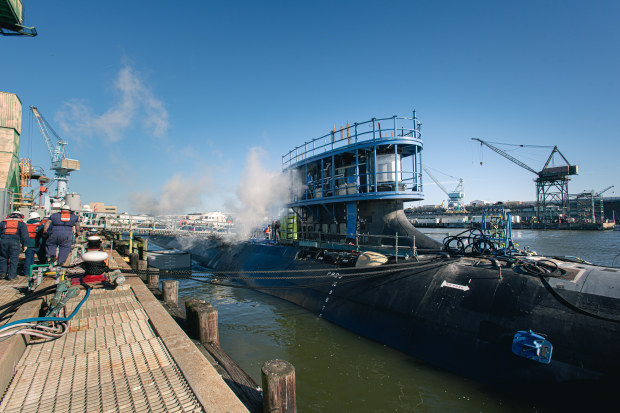US guarantees Australian AUKUS submarine sovereignty

Washington| America will not have any operational control over nuclear-powered submarines once they are sold to Australia, say those who wrote the recently approved legislation around the AUKUS pact.
Both US and Australian legislative architects have sought to assuage concerns that America would maintain control over where and how nuclear-powered Virginia-class submarines would be used by Australia once transferred over the next 10 years under the latest legislation, passed by Congress last week.

The AUKUS legislation’s passage through Congress was complicated this year.
Under the first pillar of the AUKUS agreement, Australia is to purchase up to three nuclear-powered Virginia class submarines – at least two of them second-hand – by 2032.
A House Foreign Affairs Committee spokesperson confirmed that there was no provision or intent for the US to control the submarines once sold to the Australians.
She said chairman Michael McCaul “fought successfully to keep a provision out of the bill that alluded to US control” and for which was previously included in earlier draft legislation in the US Senate.
Within the US Senate, a congressional aide also dismissed the idea that there was any legislation giving US any control over Australia’s use of the submarines once purchased.
“There may be some reasons to be cynical about AUKUS, but not whether there will be a transfer of submarines to Australia,” the aide said.
“There was never any intent that the transfer of submarines would mean anything but Australia’s own sovereignty over them,” he said.
One Australian government official also dismissed talk that the US would ever have control over the submarines once they were transferred, noting that some earlier legislation implying some degree of US control was eventually stripped from the final text.
The AUKUS legislation’s passage through Congress was complicated this year by fears that America’s own submarine industrial capacity was insufficient to keep up with its own fleet, let alone sell three submarines to another navy.
Committee chairman Michael McCaul told The Australian Financial Review that he was confident that extra money included in a supplemental bill would keep the timing of the sale of submarines to Australia on schedule.
“My committee’s legislation that was included in the [National Defence Authorisation Act] set conditions on the president to ensure the necessary investment is made prior to these sales,” Mr McCaul said.
“I am pleased the administration is taking those conditions seriously and requested $US3.4 billion for the submarine industrial base. Combined with the Australian investment of $US3 billion, it is a great start to ensure the US can meet its undersea warfare demands and sell these submarines to Australia,” Mr McCaul said.
Most of the concern about meeting the US submarine production targets have come from Republicans, with Senator Roger Wicker the most outspoken.
Senator Wicker said in a statement to the Financial Review that Congress must now act quickly on the supplemental funding for the US submarine industrial base.
“Our defence industrial base is already behind where it needs to be. We are producing about 1.2 attack submarines a year rather than the 2.3 necessary to fulfil the AUKUS agreement and meet US requirements,” Senator Wicker said.
“We have no time to waste as Xi Jinping grows his fleet in the largest military buildup since World War II. Only sustained growth in funding will help our ‘silent service’ dig itself out of its production and readiness hole to deter China for the long haul.”
The latest report from the independent Congressional Budget Office, published before approval of the final AUKUS legislation, said the sale of two Virginia class submarines would cost Australia $US6 billion ($9.3 billion) and present difficulties for an already constrained US production base.
“The US submarine industrial base is currently struggling to meet the Navy’s demand for submarines ... the Navy is experiencing cost overruns, construction delays, and missed delivery dates,” the CBO report said.
“Since 2011, the Congress has authorised and appropriated funds for the Navy to buy two Virginia class submarines per year and to begin building a class of 12 Columbia class ballistic missile submarines (SSBNs). Currently, the shipyards are building fewer than 1.5 SSNs per year.”
It presented three scenarios under the AUKUS arrangements, including one in which the US would sell three Virginia class submarines – two used and one new ship – to Australia in the 2030s.
“Because the United States and Australia have a strong alliance, improving the Australian Navy’s capability could help offset the US Navy’s potential loss of capability,” the CBO report said.
“That loss might even be more than offset because the Australian submarines would be based in the Western Pacific region and therefore could respond more quickly to any conflict with China involving Taiwan or other issues in the South China Sea.
“However, Australia would control its own submarines, and their participation in any particular conflict would not be guaranteed.”
Introducing your Newsfeed
Follow the topics, people and companies that matter to you.
Find out moreRead More
Latest In North America
Fetching latest articles